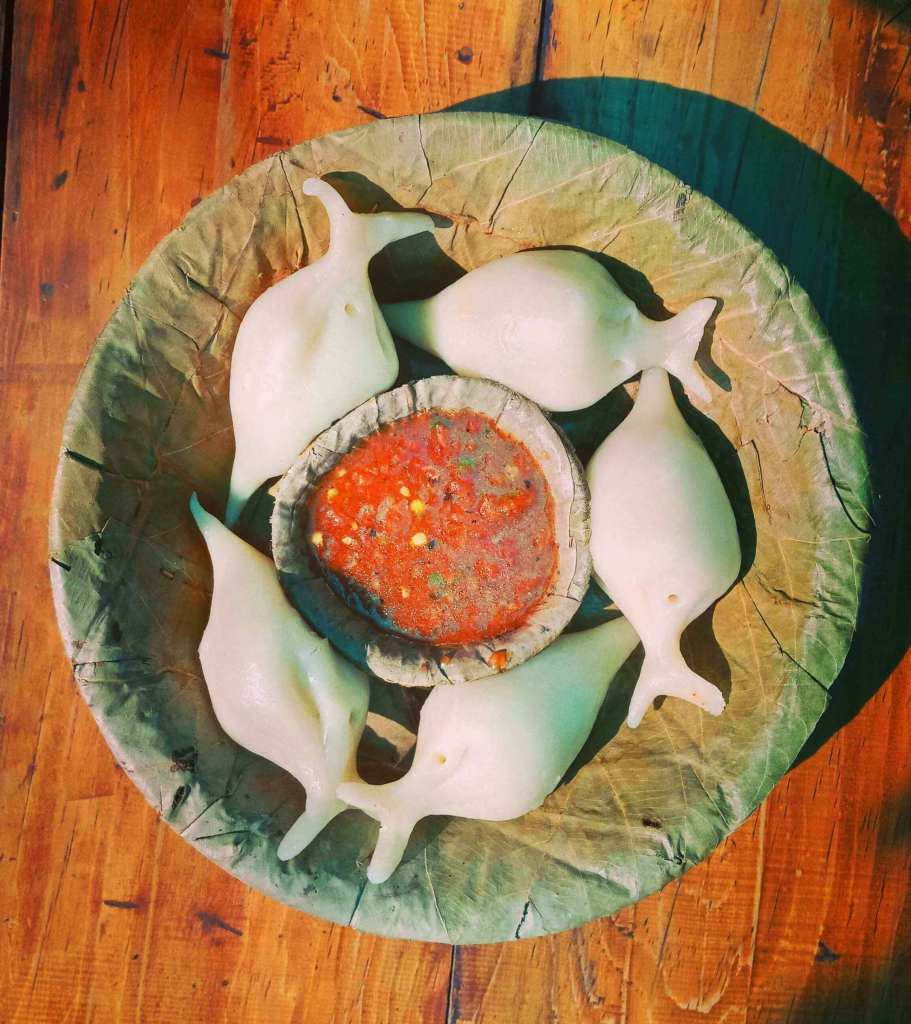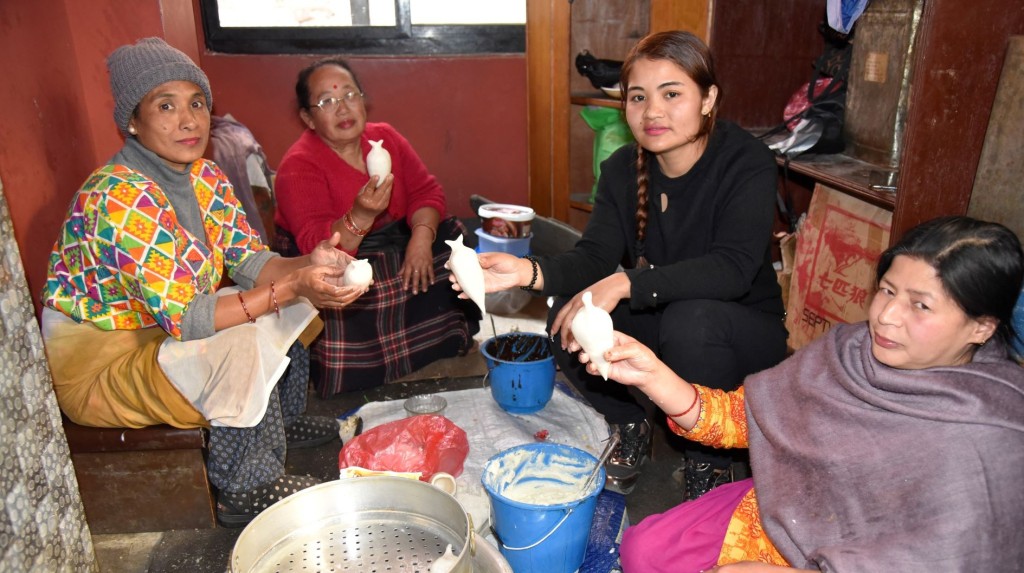Yomari is a type of Newari food, and Punhi means full moon. Yamari Punhi is a festival celebrated in full moon day by making, eating and distributing yamari. This festival is very popular in Kathmandu valley. Yomari means tasty bread. Yomari punhi is a Newari festival marking the end of the rice harvest
What is Yomari made of ?

Yomari – Newari Food 
Local Newari People Making Yomari
Yomari is made by steaming a bun like form of rice flour which is from the new harvest, the four is then formed in a fig like figure, and then filled with brown cane sugar which in Newar is called “Chaku”. Chaku meaning sweet or tasty as well. The chaku and sesame seeds are mixed with each other and brought to boil and then stuffed into the rice flour fig shaped dough , similar to dumplings or Momos. During Yomari Punhi, the fig shaped dough is not only filled with chaku but also with Khuwa, and minced meat.
The History of Yomari
In Yomari purnima people also worship Goddess Anapurna. Annapurna is the goddess of grains and food. It is the time when farmers finish harvesting and taking rest after long day’s work. Kids gathered in groups go neighborhood to ask for yomari in the evening. Sacred masked dances are performed in the villages of Hari Siddhi and Thecho at the southern end of the Kathmandu valley to mark the festival.
People believe celebration of yomari punhi brings them wealth, health and prosperity. People give different shapes to yomaris. Mostly yomaris are prepared in the form of gods and goddesses like Kumar, Ganesh, Laxmi and Kuber. Parents and elders bless children and give kids yomaris to eat. The children on the other hand perform the customary song and dance and ask for food and other gifts from the elders during the festival.
The festival is believed started from panchal nagar (Panauti). It is said Suchandra and Krita, a married couple, first experimented with fresh yield of rice from their field. They came out with shape of yomari. The new food was distributed among the villagers. The food was liked by all, the bread was named yomari, which literally means ‘tasty bread’. The couple offered yomari to Kuber (god of weath) who was disguised and passing by. Kuber was happy and disclosing himself blessed the couple with wealth. He also declared that whosoever prepare Yomari in the form of gods and goddesses on the full moon day of Marga Sukla Purnima every year and observe four days of devotion to god, will gain wealth and prosperity.
The festival is celebrated for four days. All the four days people pray and worship. A big celebration is observed at night in Dhaneshwar Mahadev temple in Banepa. There is tradition of doing Deepavali at home. People worship god Kuber, Ganesh and goddess Subhadra in these 4 days. On the second day Yomari is prepared in the shape of gods and goddesses and stored inside the rice silo (bhakari) and worshiped. On the fourth day Yomari is eaten as Prasad and believed that those gods in the form of yamari enter to human body those worship and take yamari Prasad.
People distribute yomari and rice to yomari asking kids home to home. In this day goddess durga is worshiped as Dhanyalaxmi or Annapurna mata.
Yomari is compared with the earth. Two sides of Yomari are assumed as North and South Pole. The stuffing of brown cane sugar (chaku) and sesame seeds is regarded as Mahamaya (almighty God). Sometimes, meat is also stuffed in yomari, that yomari is assumed as lord Ganesh. The yomari with black lentil is regarded as God Kumar. On the fourth and the final day the people eat the sweet yomari bread as Prasad and this marks the end of the festival.(Via Wikipedia and other sources)
During Yomari Punhi children from the age of 2, 6, 8, 10, and 12 are put a garland of Yomari around their neck with respective number of Yomari’s.
Yomari in Newari tradition is something that is widely celebrated as for Newars tradition matters the most. Yomari itself holds a lot importance for the Newars as this marks the beginning of the cold season and the end of the harvest season. And this is the time when most of the family members who are farmers come join and have a merry time with their family members.

